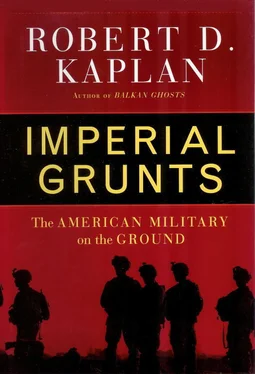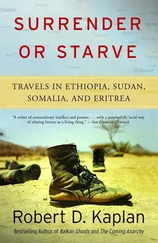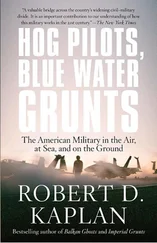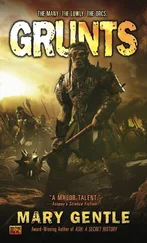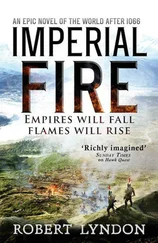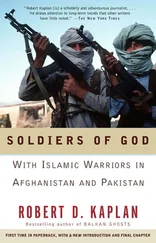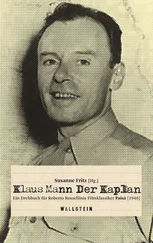“You’ll be facing interesting folk,” Byrne continued. “Guys who fought in Grozny [Chechnya], in Afghanistan, guys who aren’t all that interested in giving up. I made everyone grow mustaches for the sake of cultural sensitivity. Now I want you all to shave them off. We’re going on the offensive.” [86] Preliminary intelligence given the Marines at the time indicated that there may have been a few individuals inside Al-Fallujah who had fought in the places Byrne mentioned.
He then stood up, signaling the end of the brief. Everyone else stood up and shouted, “Ooh-rah.”
Outside, Lt. Russell, in his ever-chipper manner, noted a difficult truth: “This is one where we have no idea whether there will be lots of casualties within days, or no one will even shoot at us.” The biggest worry was that just one well-placed IED would cause a “cluster fuck,” or traffic foul-up, which, in turn, would facilitate a major ambush. Al-Fallujah was the ultimate challenge that the U.S. military had been studying and prepping for since the end of the Cold War, when MOUT (military operations in urban terrain) first came into vogue.
But some high-ranking marines were uncomfortable with that realization. After all, most of the precedents were bad: Mogadishu, Grozny, Jenin… You were ambushed as in Mogadishu in 1993, barely won through indiscriminate slaughter like the Russians in Grozny in the mid-1990s, or won relatively cleanly, in view of the circumstances, like the Israelis in Jenin in 2002, but nowhere near clean enough to satisfy world public opinion.
———
Actually, there was a model to be followed, at least partially, one that Lt. Col. Byrne occasionally alluded to, and which harked back to one of the most glorious chapters in Marine history. It was the twenty-six-day battle for Hue in Vietnam, that began January 31, 1968, during the Tet offensive. According to the Marine Corps Gazette, Hue bears no less a positive connotation than the battles of Belleau Wood, in France in 1918, and Tarawa, in the central Pacific in 1943. [87] Belleau Wood was where the Germans gave the Marines their notorious nickname, Teufel-Hunden (devil dogs).
A former imperial city of the once-unified Vietnam with 140,000 inhabitants, located near the Demilitarized Zone, Hue had been stormed by 12,000 Viet Cong and North Vietnamese regulars. They rounded up South Vietnamese soldiers, government officials, and other American sympathizers, clubbing or shooting up to 6,000 of them to death. American soldiers and marines, including the 1st of the 5th, counterattacked, leading to a month of brutal, theater-level urban combat that featured three undermanned Marine infantry battalions fighting house-to-house. The Marines, in helping to take back the heavily fortified urban center, helped to kill 5,113 of the enemy and expel almost another 5,000, while suffering only 147 killed and 857 wounded: results that they would have qualified as an historic victory in either of the two world wars. [88] This was in addition to the dozens of soldiers killed and more than 500 wounded.
Of the 6,000 prisoners and civilians slaughtered by the Hanoi government, 3,000 mass graves were discovered. The indiscriminate North Vietnamese massacre of thousands, as well as the Marine and Army heroism inside the city, went relatively unnoticed in the America media, though, compared to coverage of the massacre at My Lai, which happened a month later, in which a U.S. Army platoon killed 347 innocent civilians. 16 [89] The coverage of My Lai did not appear until revelations began to surface in late 1969.
Al-Fallujah might be like Hue, I thought. As at Hue (and Stalingrad, too) snipers on both sides would provide a force-multiplier effect. Like Hue, it would be a messy squad leader’s war, a struggle of privates first class and corporals rushing from street to street, where the enemy would hide within crowds, firing mortars and rocket-propelled grenades, and mosques would be used as enemy fortresses in a similar way that Buddhist temples had been at Hue. It would be a battle where a certain percentage of the local inhabitants would sympathize with the insurgents, but where the majority would flee or lie low, just trying to survive. 17
———
More briefings followed at lower levels of command. Each company captain briefed his staff noncoms on their specific routes and objectives in the city, and the radio frequencies and call signs to be used. Briefs were also held on the placement of heavy guns and snipers. The engineers had to decide where to drop dirt and spike strips for the roadblocks. The order of the convoy to the battle zone had to be established, divided by “sticks” and “serials,” just as before the departure from Kuwait. By the evening of April 4, the officers had already gone several days with little sleep. This was before the operation had begun.
“Stepping time” was scheduled for 1 a.m. on April 5. At 7:30 p.m. April 4, Capt. Jason Smith assembled Bravo Company in a V formation in front of the red company flag. He told his 150 marines that they should be grateful for the opportunity now given them. Then a chaplain, Navy Lt. Wayne Hall of Oklahoma City, blessed Bravo: “Today is Palm Sunday,” he began, “the day of Jesus’ triumphal entry into Jerusalem, where he broke the bounds of Hell. Tonight commences your triumphal entry into Fallujah, a place in the bounds of Hell. This is a spiritual battle, and you marines are the tools of mercy.” As he invoked the holy spirit, the 150 marines dropped to one knee and bowed their heads, removing their bush or field caps as they did so.
I told Capt. Smith that I would link up with Bravo the next day, after accompanying Lt. Col. Byrne to Al-Fallujah’s outskirts. Capt. Smith’s face was glowing in rapture. This was the moment he had lived for. Bravo had been selected to be the tip of the spear for the assault inside the city, just as Bravo Company of the 1st of the 5th Marines had been the first inside the citadel of Hue thirty-six years earlier. 18
By 9 p.m. the camp was silent, as many marines slid away to take power naps. In the shadows cast by the full moon I noticed scout-snipers painting their faces in green cammie stick. 19
A few hours later, we “stepped” outside the gate.
———
The weather had turned cold and windy. The dust of the desert looked like snow in the moonlight. In under an hour, the Renegades arrived at a point in the desert half a mile outside Al-Fallujah, where a communications team set up a temporary command post for Lt. Col. Byrne. Al-Fallujah was a line of twinkling yellow and bluish lights, where the sound of small arms fire and RPGs could be heard intermittently: Charlie Company, commanded by Capt. Wilbert Dickens, had already made “contact” with the enemy at the “cloverleaf,” a highway intersection outside the city to the northeast.
It was too cold and cramped in the Humvee for me to sleep. Along with Gunner Bednarcik, Cpl. Pena, and Lance Cpl. Neal, I listened to the news of the cloverleaf engagement on the battalion “tac” (tactical radio network) throughout the night. Catnapping in daylight and staying up all night would become a pattern over the coming week. Night fighting favored the Americans, armed with night vision goggles. As Lt. Col. Byrne had told me, “The bad guys only have what God gave them. We have what Raytheon gave us.”
At dawn, coughing and freezing, I walked over to Byrne’s Humvee. He was sitting in the back seat, his head half hidden inside a balaclava, shivering and coated with dust like the rest of us. He was listening and talking to three different radio nets at once. Military command is about making split-second executive decisions, the consequences of which might psychologically immobilize your average CEO, and making those decisions during periods of extreme physical discomfort.
Читать дальше
